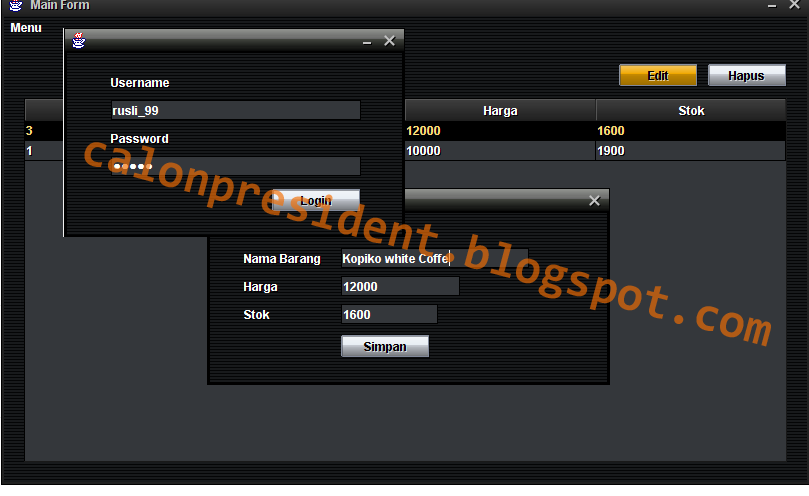Source Code Aplikasi Penjualan Barang Kasir Kasiran

Sega Saturn Bios Us Rating: 7,3/10 7719reviews KR 1995-11-10 ₩550,000 SPC-SATURN The Sega Saturn (セガサターン), is a video game console manufactured by and was the successor to the (as opposed to add-ons such as the and ). Initially released in 1994, the Saturn was a 32-bit compact disc-based system, and was a key player in what is now widely known as the fifth generation of video game consoles. The Saturn was first released on November 22, 1994 in Japan, May 11, 1995 in North America, and July 8, 1995 in Europe. Depending on where you live, the Saturn could be described as either Sega's most successful console of all time (Japan) or one of their biggest commercial failures (North America).
Got you covered. Sign up for ShippingPass so you can shop more, save money and live better. Source Code Aplikasi Penjualan Barang Kasir Kasiran here.
Despite being powerful for its time, its complex hardware and inability to meet rapidly evolving consumer expectations and demands put it in a distant third place in the Western world, but a combination of 2D games, 3D ports and strong marketing campaigns made the Saturn the most successful Sega console in Japan. Estimates for the total number of Saturns sold worldwide range from 9.5 million to 17 million. The Saturn's main competitors were released just a week after the Saturn in Japan, and the from September 1996. Its arcade counterpart was the (ST-V) system. It was succeeded by the in late 1998. Contents • • • • • • • • • • • • • • • • • • • Hardware The Sega Saturn is the successor to the Mega Drive, though as a video game system it is almost entirely different. It is a ' console, marketed in such a way that it appeared to be an evolution of the '16-bit' era of video gaming dominated by the Mega Drive and Super NES (which in turn succeeded the ' and NES, respectively).
This description, however, was initially fabricated - Sega of Japan originally claimed the Saturn was a '64-bit' console and some within Sega even chose to call it an '128-bit' machine, a number arrived at by cumulating processors rather than simply picking the main CPU. Download the two BIOS files you need (they are here in a zip file.) sega_101.bin (md5 hash is: 85ec9ca47d8fcbcca8b964) mpr-17933.bin (md5 hash is. Filename: Purpose: SHA-256 Hash: sega_101.bin, BIOS image. Required for Japan-region games. Mpr-17933.bin, BIOS image. Required for North America/US-region and Europe-region games.
Alternatively some areas of Sega simply went down the 'multi-processor' route, refusing to get drawn into the perceived differences between 32-bit and 64-bit. This was incidentally the last video game generation where these so-called 'bit wars' were considered to matter.
The system uses CD-ROMs as its primary choice of media. Though it contains a cartridge slot, this is not used for games, but rather. Usb flash driver format tool iid. The former was to extend the space for save games beyond that of the Saturn's internal memory, while the latter was used to augment the Saturn's limited memory and to avoid long CD load times.
The Saturn has two controller ports, and the standard Saturn controller builds on that seen in the six button. It adds two shoulder buttons, first seen on the Super NES controller, bringing the amount of buttons up to nine. The, released later with, would supply the console with an analogue stick and analogue shoulder buttons, the latter later being used in the Sega Dreamcast before being adopted by and for their and consoles, respectively.

The Sega Saturn hardware combined features from several. It has a multi-processor system, like machines. Its geometry engine consists of three math processors, two inside both CPU and one inside the SCU, which were all intended to be programmed in parallel using complex, similar to how Sega programmed 3D arcade games at the time. The combined features from the and the, with a quad polygon engine based on the, and capability based on the. The VDP1 is capable of drawing more polygons than the Model 1, but less than the Model 2.
The Saturn was also influenced by the Sega Model 1's use of a separate graphics processor for the 2D backgrounds (based on the ). The quad polygons are drawn with (for smoother edges), (a form of perspective correction), bilinear approximation (reduces texture warping), and medium polygon accuracy (resulting in seamless polygons). The Saturn's was based on technology (an evolution of technology), used for both 2D backgrounds and 3D planes; the latter can be manipulated as polygon objects. The VDP2's tiled infinite plane engine uses compression and a form of / to draw large, detailed, 3D texture-mapped infinite planes (for things such as grounds, seas, walls, ceilings, skies, etc.), with and a virtually unlimited (and capable of effects such as transparency, parallax scrolling, reflective water surfaces, fog/misting, fire, and heat haze), at a very high for its time. The VDP2 draws 3D infinite planes as large as 4096×4096 pixels at 30 FPS, equivalent to a of over 500, significantly larger than what any console or PC hardware were capable of with polygons at the time. It requires 1 million texture-mapped polygons/sec, with 500 pixels per polygon, to draw a texture-mapped 4096×4096 infinite plane at 30 FPS; the was the first home system capable of doing this with polygons, as it was the first home system that exceeded 500 MPixels/s polygon fillrate (using tiled rendering). The Saturn was known for its difficult 3D development environment (especially for third-party developers), including its complex parallel processing hardware architecture, requiring familiarity with assembly language, lack of an operating system, and initial lack of C language support, useful development tools and graphics software libraries.